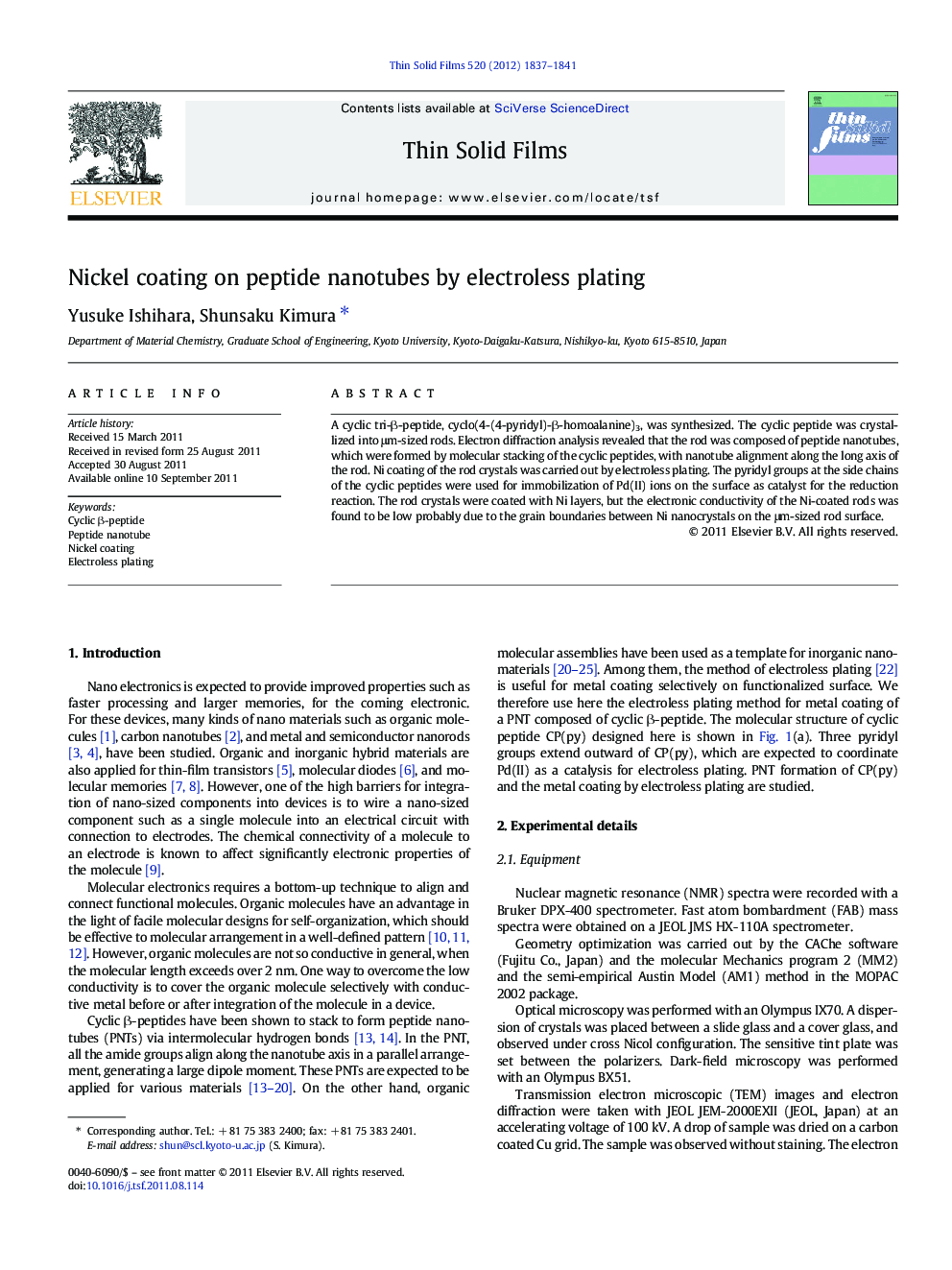| Article ID | Journal | Published Year | Pages | File Type |
|---|---|---|---|---|
| 1667319 | Thin Solid Films | 2012 | 5 Pages |
A cyclic tri-β-peptide, cyclo(4-(4-pyridyl)-β-homoalanine)3, was synthesized. The cyclic peptide was crystallized into μm-sized rods. Electron diffraction analysis revealed that the rod was composed of peptide nanotubes, which were formed by molecular stacking of the cyclic peptides, with nanotube alignment along the long axis of the rod. Ni coating of the rod crystals was carried out by electroless plating. The pyridyl groups at the side chains of the cyclic peptides were used for immobilization of Pd(II) ions on the surface as catalyst for the reduction reaction. The rod crystals were coated with Ni layers, but the electronic conductivity of the Ni-coated rods was found to be low probably due to the grain boundaries between Ni nanocrystals on the μm-sized rod surface.
